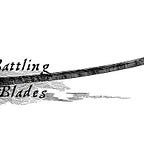Blades Apart: The Scimitar and Cutlass Unveiled.
A Comparative Exploration of Eastern Elegance and Maritime Might in Swordcraft.
In the world of edged weapons, the scimitar and the cutlass stand as distinct representatives of different cultures and historical periods. Though both possess a unique allure, they bear differences in design, origin, and purpose. Join us as we embark on a journey to unravel the mystique surrounding these two iconic swords, exploring their characteristics and the contexts in which they historically flourished.
I. Origins and Historical Context:
- Scimitar’s Eastern Roots: The scimitar finds its origins in the Middle East, reflecting the craftsmanship of Persian, Turkish, and Arabian swordsmiths. Characterized by a curved, single-edged blade, the scimitar became synonymous with Eastern martial traditions and cultural symbolism.
- Cutlass and Maritime Legacy: In contrast, the cutlass has a maritime heritage, tracing its roots to European naval history. Widely associated with pirates and sailors, the cutlass was favored for its durability and versatility in close-quarter combat aboard ships during the Age of Sail.
II. Blade Design:
- Scimitar’s Elegance and Curve: The scimitar sword boasts a distinctive, elegantly curved blade. This curvature, often extending from the hilt to the tip, enhances the cutting efficiency of the sword. The design facilitates swift and precise slashing motions, making the scimitar an effective weapon in cavalry and infantry contexts.
- Cutlass’s Stout and Straight Edge: Conversely, the cutlass features a stout, straight-edged blade with a slight curve towards the tip. This design prioritizes durability and allows for effective thrusting and cutting actions in the confined spaces of a ship’s deck. The cutlass’s versatility made it a preferred weapon for naval boarding parties.
III. Purpose and Functionality:
- Scimitar’s Versatility in Combat: The scimitar’s design lends itself to a range of combat scenarios. Its curved blade facilitates slashing attacks, making it adept in mounted combat, while the curvature also aids in defensive maneuvers. The scimitar’s versatility suited the diverse landscapes of the Eastern regions.
- Cutlass’s Maritime Prowess: The cutlass, designed for naval engagements, excelled in close-quarter combat aboard ships. Its robust and compact design allowed sailors to navigate the tight confines of a vessel while wielding an effective weapon for both cutting and thrusting actions during boarding actions.
IV. Cultural Significance:
- Scimitar and Eastern Symbolism: The Scimitar carries cultural significance in the Middle East, often being associated with the martial prowess of historical Islamic warriors. Its symbolic value extends beyond its practical use, becoming a representation of honor and tradition in various cultures.
- Cutlass and Nautical Lore: Steeped in nautical lore, the cutlass is an emblem of piracy and naval adventure. Popularized by the swashbuckling tales of pirates, the cutlass became an icon of the Age of Piracy and is synonymous with the romanticized image of buccaneers on the high seas.
V. Historical Significance:
- Scimitar in Eastern Warfare: Historically, the scimitar played a crucial role in Eastern warfare, from the battles of the Ottoman Empire to the conquests of the Arabian Peninsula. Its design complemented the swift and dynamic combat styles of cavalry and infantry in the region.
- Cutlass in Naval Conflicts: The cutlass’s historical significance is intertwined with naval conflicts, particularly during the Age of Sail. Naval boarding parties armed with cutlasses engaged in intense hand-to-hand combat during ship-to-ship encounters, leaving an indelible mark on maritime history.
VI. Legacy in Modern Times:
- Scimitar’s Martial Arts and Ceremonies: In modern times, the scimitar continues to be revered in martial arts and cultural ceremonies. Its distinctive design makes it a sought-after collector’s item and its use persists in traditional dance and martial arts performances.
- Cutlass in Maritime Heritage: While no longer a weapon of war, the cutlass remains a symbol of maritime heritage. Replicas of cutlasses are popular among collectors, and the image of a cutlass-wielding pirate endures in popular culture, immortalized in literature and film.
VII. Conclusion:
Appreciating the Blade Diversity: As we explore the distinctions between the scimitar and the cutlass sword, we unveil not just the variations in their designs but the rich cultural and historical tapestries they represent. The scimitar, with its elegant curvature, speaks of Eastern martial traditions, while the cutlass, with its stout blade, echoes the daring adventures of seafaring pirates. Each blade, with its unique characteristics, adds a layer to the diverse world of edged weapons, inviting us to appreciate the artistry and history woven into these iconic swords.
